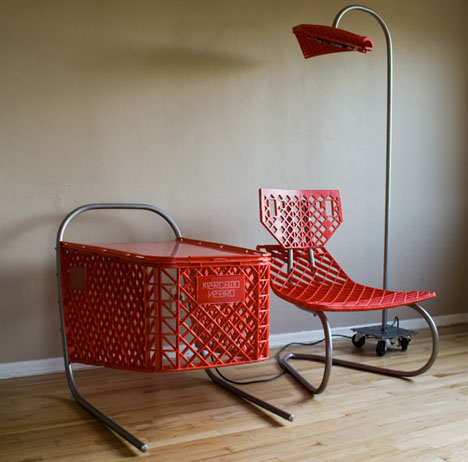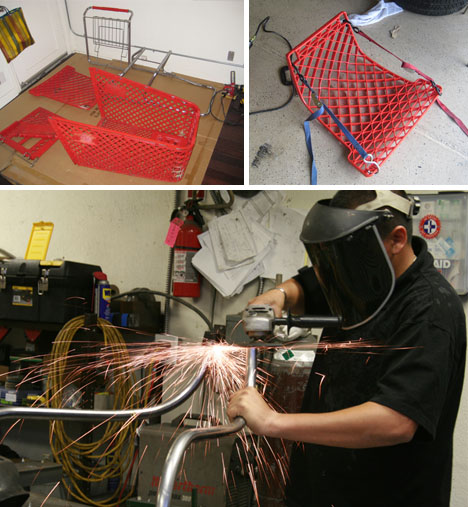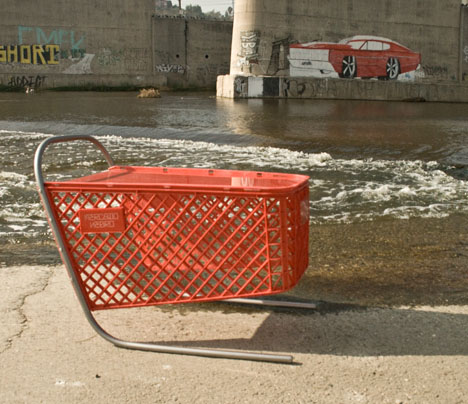Recycled Shopping Carts: 3-Piece Living Room Furniture Set

Grocery check-out clerks ask whether you want paper or plastic bags … but when it comes to the cart you carry them out in there is only one choice: plastic and metal. One designer has a vision to split this ubiquitous unit into three new parts for in its post-store ‘second life’ – a stylish living room furniture collection complete with an easy chair, side table and floor lamp.

This design idea is simple and sound … if you are able to weld metal and willing to suspend your disbelief in the style potential of orange plastic and see beyond the parking lot where you normally leave your shopping carts behind.

For starters, the metal and plastic parts of a grocery cart are designed to take abuse both indoors and out and support substantial loads. With a few strategic bends and twists, reusing them in new furniture pieces makes a surprising amount of sense from a structural standpoint as well as a conceptual one.

A self-styled cross-disciplinary and multi-media design advocate, Ramon Coronado created this Black Market series to challenge conventional aesthetics and show that even the lowliest and loneliest of discarded Los Angeles street objects could become more than urban trash when cut, curved and bent in the hands of a custom craftsman – a durable design work as complex as architecture and visually rich as sculptural artwork.

Like other pieces of work by Ramon that deal with homelessness and other contemporary conditions in his home city of LA, this project is about more than creative eco-friendly reuse or sustainable material innovation – it is about reclaiming private garbage and turning it into public outdoor furniture. These shopping cart seats are removed from parking-lot isolation and converted from symbols of urban poverty, desolation and despair into a powerful set of high-design art objects someone would be proud to own.




